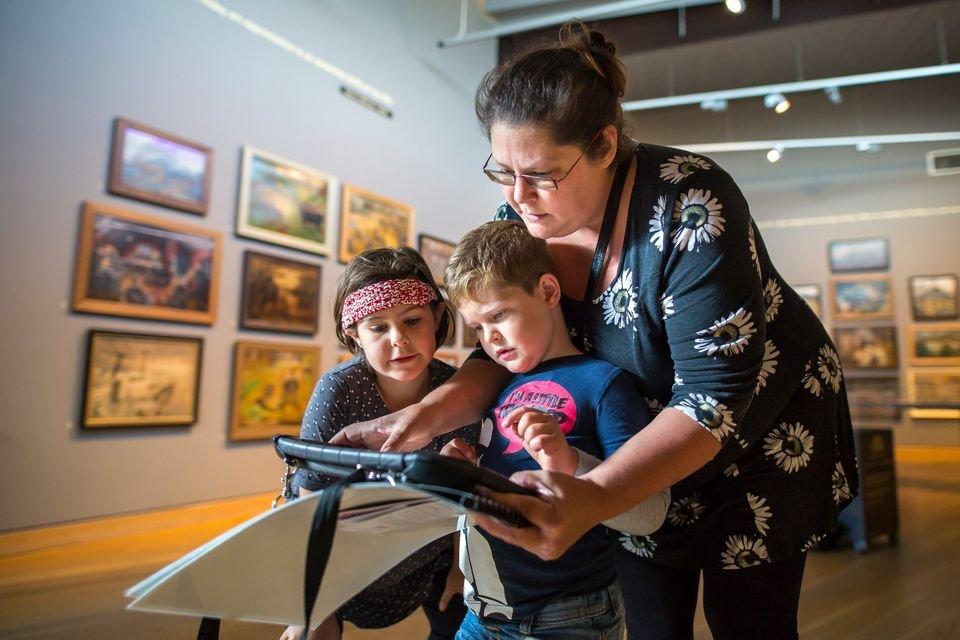Art Fund publishes new report on digital impact in museums and galleries

How might museums be supported in developing a digital strategy? Art Fund's Head of digital services, Mike Keating, shares the findings of a new report to better understand the barriers museums face in their digital offer.
In the early days of the pandemic, Art Fund launched Respond and Reimagine, a programme to help museums keep going and adapt their activities as everything shifted to digital. We’ve run a few more rounds of the funding since, specifically aimed at helping organisations reimagine their activities post pandemic, offering support to build expertise, capacity and connections within and outside the sector.
As we planned a fourth round, we decided it was time to review the digital projects we’d already funded to better understand what barriers museums face in their digital work – from content production to building new websites, from setting up interactives to fundraising online.
Art Fund teamed up with the Museums Association, One Further and Cultural Associates Oxford to understand what worked, what didn’t and what role we might play in better supporting museums with their digital work. Through a sector survey, desk research, analysis of two years of grant awards and over 50 hours of facilitated sessions with museums, we learned a lot. Specifically, we posed five questions around five themes:
How can museums measure the social impact of digital activities?
How can museums identify and understand their digital audiences, to reach new and more diverse audiences?
What does good practice and an effective digital strategy for museums look like?
How can museums scale up digital activity and move towards longer-term planning?
What is the potential for museums to monetise digital work and experiences?
Findings
One of the key findings outlined in our research report, Digital Impact in Museums and Galleries, is that a lack of digital strategy is the single biggest barrier to digital effectiveness. A number of applications for funding struggled to link proposed work with any overarching digital plan or strategy, and many respondents in this research lacked confidence in – or knowledge of – their organisation’s central digital strategy.
Others also reported low levels of confidence in developing one, and several cited a lack of strategy as a key reason for burnout in digital teams who are spread too thin trying to deliver everything. Creating a strategy takes a time investment, but can yield dividends in saved time, more effective work, scale and strong funding applications in the future.
On a more positive note, we found the sector has a huge amount of digital knowledge and that for most of the projects it wants to deliver, the knowledge exists somewhere. However, it is often siloed internally in organisations and isn’t very well connected externally.
While digital teams often understand audience insight or user research they’re often not connected with learning or programming teams who have the skills to deliver longer-term evaluation on subjects like social impact. Bringing these skills together is vital for successful digital work so its impact can be understood in the short and long term. Peer networks or connections across the sector for those working on similar projects could also help if the organisations share the barriers they faced and how they overcame them.
One challenge museums struggled with was what to do with their digital audience. As they upped their digital content output during lockdowns, museums found these audiences were further flung or demographically quite different to a traditional visitor. Then, as venues reopened and things went back to ‘normal’, these digital audiences were either forgotten or offered the same content as the visiting audience. There’s a clear opportunity for museums to understand these groups better and work on audience development projects specifically for digital audiences.
Monetising digital was cited frequently as a challenge, with very few reporting significant income from digital projects. While there were some exceptions, these tended to be from one-off online events like Oxford University Museum of Natural History’s Mystery at the Museum. Although, London Transport Museum’s Patreon subscription could be something others might follow if they can create the content to support it.
On-site contactless donations were highlighted as one way of bridging this gap between a physical place and a ‘digital’ source of income. Usability improvements to online shops or donation journeys were also frequently mentioned as opportunities, but because of a lack of overall strategy, these improvements generally fell down the list of priorities.
What's next
In addition to Art Fund’s grants and access to National Art Pass members, our online ticketing and crowdfunding platforms saw a big increase in use during the pandemic – and our users have lots of ideas on how to improve them. We’re currently assessing how well they meet the sector’s needs. We also know that museums are interested in raising more money – whether on-site through contactless or online through donations.
Watch this space for announcements about future funding programmes in 2023. We will also make sure that future funding for digital projects can also be used to help organisations develop digital strategies, to enable better digital projects. We’re also really interested in ways we can encourage groups of museums to work together to create better digital funding applications which lead to better digital projects. We will look at ways we can bring people together to do this.